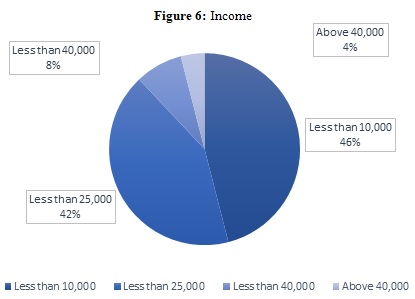Understanding the Acceptance Pattern of UPI in New Normal: A Study in Rural Districts of West Bengal
DOI:
https://doi.org/10.54741/mjar.3.3.5Keywords:
acceptance pattern, covid-19, inter-bank transactions, sustainable solutions, unified payment interfaceAbstract
The UPI is an entirely new concept which has changed the entire banking systems. It provides on-the-go services regarding funds transfer with added security, which is adopted throughout the country. Recently, COVID-19 pandemic shook the entire world, which rose due to contamination. Therefore, physical payment systems ceased slowly and digital payment systems such as IMPS, NEFT etc. among these payment systems, UPI (unified payment systems) emerged as an entirely revolutionary payment method. However, despite of the added features, previous studies have shown that the UPI adoption is very slow in the rural parts of India. Literatures show that there has been very few research on the acceptance pattern of UPI in the rural districts of West Bengal. Hence, the present study is an attempt to understand the factors which affect the acceptance/non-acceptance of UPI payment systems. The present study is conducted in two stages. In the first stage, the factors are identified, and in the second stage, these factors were tested for biasness in various demographic factors. Findings suggest that rewards, convenience, and technological factors are biased among occupation, education and location demographics respectively.
Downloads
References
Chaterji, A., & Thomas, R. (2017). Unified Payment Interface (UPI): A catalyst tool supporting digitalization – Utility, prospects and issues. International Journal of Innovative Research and Advanced Studies, 4(2), 192-195.
Chawla, P., Singhal, A., & Bajaj, P. (2019). A study on awareness and adoption of Unified Payments Interface (UPI) for digital payments. Journal of Composition Theory, 12(10), 472-485.
Field, A. (2009). Discovering statistics using SPSS. SAGE Publications.
Gochhwal, R. (2017). Unified payment interface — An advancement in payment systems. American Journal of Industrial and Business Management, 07(10), 1174-1191. doi:10.4236/ajibm.2017.710084.
Kakade, R. B., & Veshne, N. A. (2017). Unified Payment Interface (UPI) – A way towards cashless economy. International Research Journal of Engineering and Technology, 4(11), 762-766.
Rasna, T. P. P., & Susila, S. (2021). A comparative study on the usage pattern of UPI payments among rural and urban at Kannur district of Kerala. World Wide Journal of Multidisciplinary Research and Development, 7(8), 20-24.
Rastogi, S., Panse, C., Sharma, A., & Bhimavarapu, V. M. (2021). Unified Payment Interface (UPI): A digital innovation and its impact on financial inclusion and economic development. Universal Journal of Accounting and Finance, 9(3), 518-530. doi:10.13189/ujaf.2021.090326.
Shankar, A., & Kumari, P. (2016). Factors affecting mobile banking adoption behaviour in India. Journal of Internet Banking and Commerce, 21(1), 1-24.
Shaw, P., & Saha, S. K. (2020). Opportunities and challenges of digitalization in the banking sector: An empirical study on customer’s attitude and perception towards online banking in Darjeeling district. Jamshedpur Research Review, 3(40), 47-55.
Singh, R., & Malik, G. (2019). Impact of digitalization on Indian rural banking customer: With reference to payment systems. Emerging Economy Studies, 5(1), 31-41. doi:10.1177/2394901519825912.
Tungare, V. (2018). A study on customer insight towards UPI (Unified Payment Interface) – An advancement of mobile payment system. International Journal of Science and Research, 8(4), 1408-1412.

Downloads
Published
How to Cite
Issue
Section
License
Copyright (c) 2023 Dipankar Mondal, Suraj Sharma

This work is licensed under a Creative Commons Attribution 4.0 International License.
Research Articles in 'Management Journal for Advanced Research' are Open Access articles published under the Creative Commons CC BY License Creative Commons Attribution 4.0 International License http://creativecommons.org/licenses/by/4.0/. This license allows you to share – copy and redistribute the material in any medium or format. Adapt – remix, transform, and build upon the material for any purpose, even commercially.









